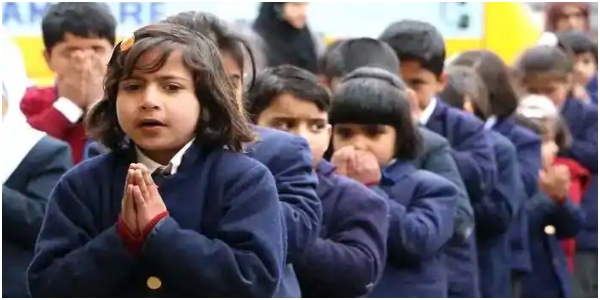National Education Policy 2020- Will it really reform India's schooling system?
Total Views |
The Union Cabinet on Wednesday approved the new National Education Policy (NEP) and renamed the HRD Ministry as Education Ministry. Making the announcement, Union Ministers Prakash Javadekar and Ramesh Pokhriyal Nishank said there would be a single regulator for all higher education institutions and MPhil would be discontinued. While the National Education Policy 2020 has been hailed by most as a progressive shift in the government’s approach to school education, certain changes regarding the three-language formula has been criticised as the new policy states the regional mother tongue to be the medium of instruction till 5th grade.
The draft of the National Education Policy coming out decades after the second National Policy on Education was promulgated in 1986 and distilled through five years of several draft panels and national consultations naturally carried a lot of expectations. However, the year 2020 seems to only air some loud and naive concepts, some well-intentioned but unsubstantiated ideas and some smartly crafted statements on contentious intended action.

The draft’s eponymous chapter on ‘foundational literacy and numeracy’ describes a severe learning crisis and warns that the country is now to lose 10 crore or more students, the size of a large country, from the learning system. It then goes on to resolve that this cannot be allowed to happen. “The cost is far too great, to crores of individuals and to the nation. Attaining foundational literacy and numeracy for all children must become an immediate national mission,” it notes. It then goes on to state, almost tautologically, that the reason behind this is a 'lack of school preparedness', a problem which the draft says acutely ‘afflicts’ children from disadvantaged socio-economic backgrounds without access to pre-primary education.
NEP 2020 asserts that early grade schooling does not lay emphasis on reading, writing and speaking or on mathematical ideas and thinking, but moves quickly on to rote learning. In actual fact, ‘rote’ learning frames all of schooling, its expectations, syllabi, texts, teaching and assessment at all levels, as has been recognised and discussed by all the earlier policies. So how does this policy acknowledge, understand or face that systemic challenge? Enumerating counting, arithmetic and mathematical thinking as different elements of foundational numeracy indicates a lay understanding of ‘learning’ that runs through the document, often hiding behind the repeated use of terms such as ‘flexible’ and ‘fun’.
A crucial theme on integrating work and education, not for a vocation but as a medium of learning from life and for life, which has been implemented by the Zakir Hussain Committee (1938), has not been seriously discussed at all. The draft claims that 'exposure to practical vocational-style training is always fun for young students' and recommends, without any modalities, that every student will take a fun year-long course on a survey of vocational skills and crafts, sometime between grades six and eight, with some hands-on experience of carpentry, electric work, gardening, pottery, and so on. Indeed, this is still relevant, but the policy gives no understanding of how the shrinking of the curriculum content to its core will be achieved or what the ‘core’ implies.
The most brazen attack is on the Right to Education Act, which while being proposed to be extended has been hugely curtailed with. Its most basic requirements like the quality of provision, qualification of teachers, and so on will be removed, to allow alternative models of education such as gurukulas, paathshaalas, madrasas, and home schooling to flourish. Ironically, qualified teachers, who are not available for these children, are expected to consistently monitor their learning, and also this army of volunteers, peer tutors, and instructional aides. Its all left for the time to note, 'now what'?

